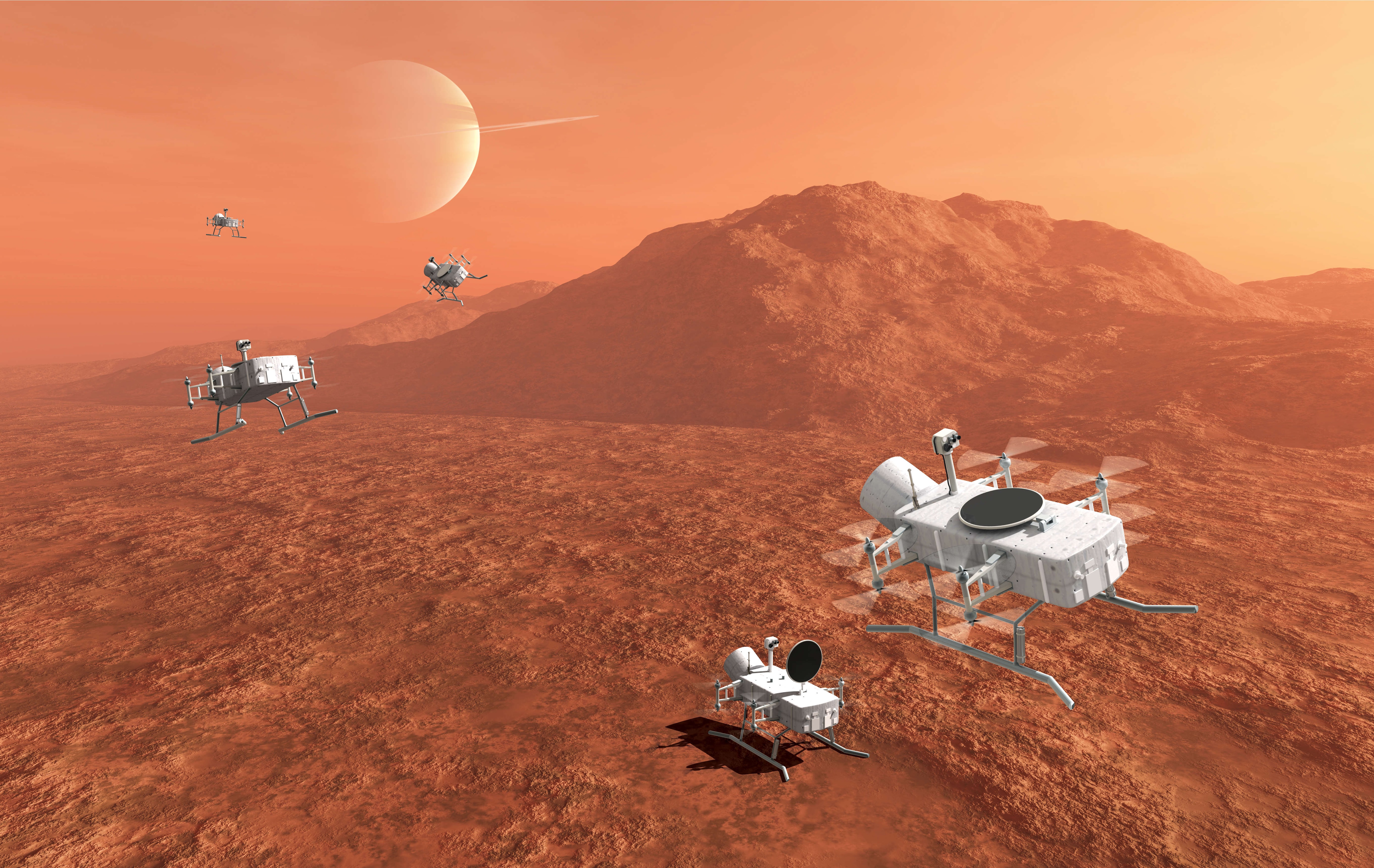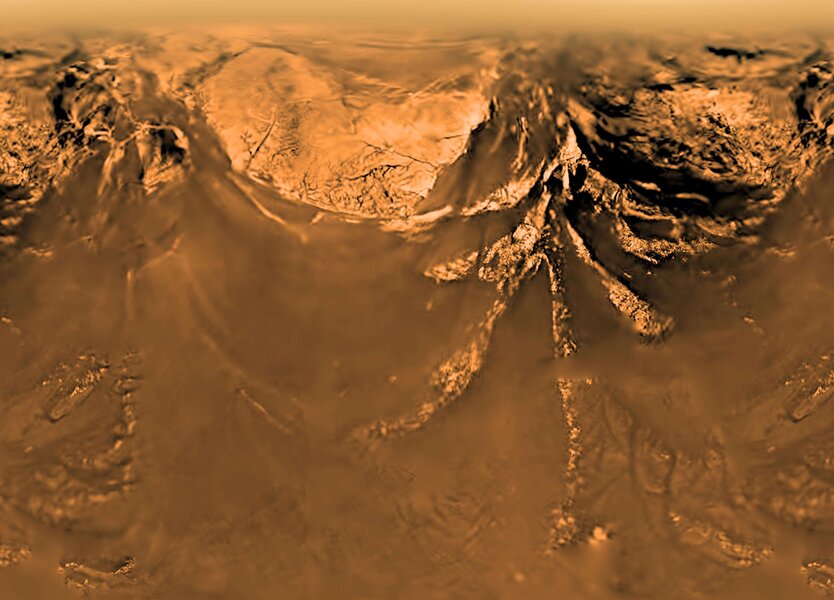Create a free profile to get unlimited access to exclusive videos, sweepstakes, and more!
Titan was (sort of) recreated in a glass to find out what it’s made of

Can you really put a moon in a glass? You can when there is no other way to get up close to it in the foreseeable future.
Because nobody’s going there anytime soon, and even spacecraft will have to wait some years, scientists recreated the conditions of Saturn’s largest moon in a glass to study it almost as if they had landed there. Titan has some things in common with Earth—certain organic molecules exist on both. It also has a dense atmosphere and is the only other known object in space with surface bodies of liquid. Then you have things about it that are totally alien.
Researchers led by chemist and principal investigator Tomče Runčevski of Southern Methodist University recently presented the results of their study, which involved recreating conditions on Titan in glass cylinders, at the fall virtual meeting of the American Chemical Society. Earth and Titan share some organic molecules, but they’ve never been looked at through the lens of Titan’s conditions before.
“[Titan’s atmosphere] is nitrogen and methane fueled by energy from the Sun and Saturn's magnetosphere, and also from a couple of processes on the surface of titan,” Runčevski said in a conference video. “They react one with another and they create a vast library of organic molecules.”
Acetonitrile (ACN) and propionitrile (PCN) occur as liquids on Earth, but crystals on the freezing moon. Titan’s temperatures can plunge all the way down to -290 degrees Fahrenheit. However, these two molecules are capable of creating structures that would (at least hypothetically) allow other molecules that may be ingredients for life to come together. Whether or not these prebiotic molecules are actually found on Titan is unknown, and the presence of organics does not always mean life-forms, but even the possibility of life is usually worth investigating.
Nitriles are organics that contain a cyanide group, in which carbon is triple-bonded to nitrogen (think of them as organic cyanides). It should probably be no surprise that they are found on a moon whose atmosphere is 95 percent nitrogen with a small amount of methane thrown in. ACN and PCN are both thought to be floating around in its hazy atmosphere, which is four times thicker than Earth’s, in aerosol form. These poisons can actually bind to other molecules and create protein structures. Some of these structures are even found in mammals like us.
“What is interesting is that if we follow the production pathways starting from nitrogen and methane to acetonitrile and propionitrile, they follow the same reaction pathways,” said Runčevski. “So our logic is, if we have acetonitrile being synthesized at some point, then at some point in space and time, we will have propionitrile as well.”
To recreate Titan in a lab, Runčevski and his team started with water and drastically lowered the temperature, so it froze as it would at the extreme temperatures on Saturn’s largest moon. They then introduced ethane, which turns into a liquid at those temps, and also explains the methane and ethane lakes and seas on the surface of Titan. To that, they added nitrogen, and then ACN and PCN to simulate Titan’s toxic rain. Temperatures were raised and lowered here and there as if the chemicals were being exposed to Titan’s actual temperature changes.
Crystals that formed in this “moon in a jar” were analyzed with everything from different types of diffraction, or light scattering, methods to tests that found out what spectra of light and how much heat they gave off in chemical reactions. The researchers saw some bizarre results. There is one form of PCN crystal that that cannot expand evenly as it grows hotter on Titan, which could cause cracks in the surface. Upcoming studies will investigate more spectral properties and find out whether ACN and PCN spectra match what the Cassini-Huygens mission observed.
Because Titan’s infamous haze affects its transit spectra, or the wavelengths of light that are able to make it through as it passes in front of, or transits, the Sun, who knows what the spectral studies could reveal about the naked moon beneath that haze.



























